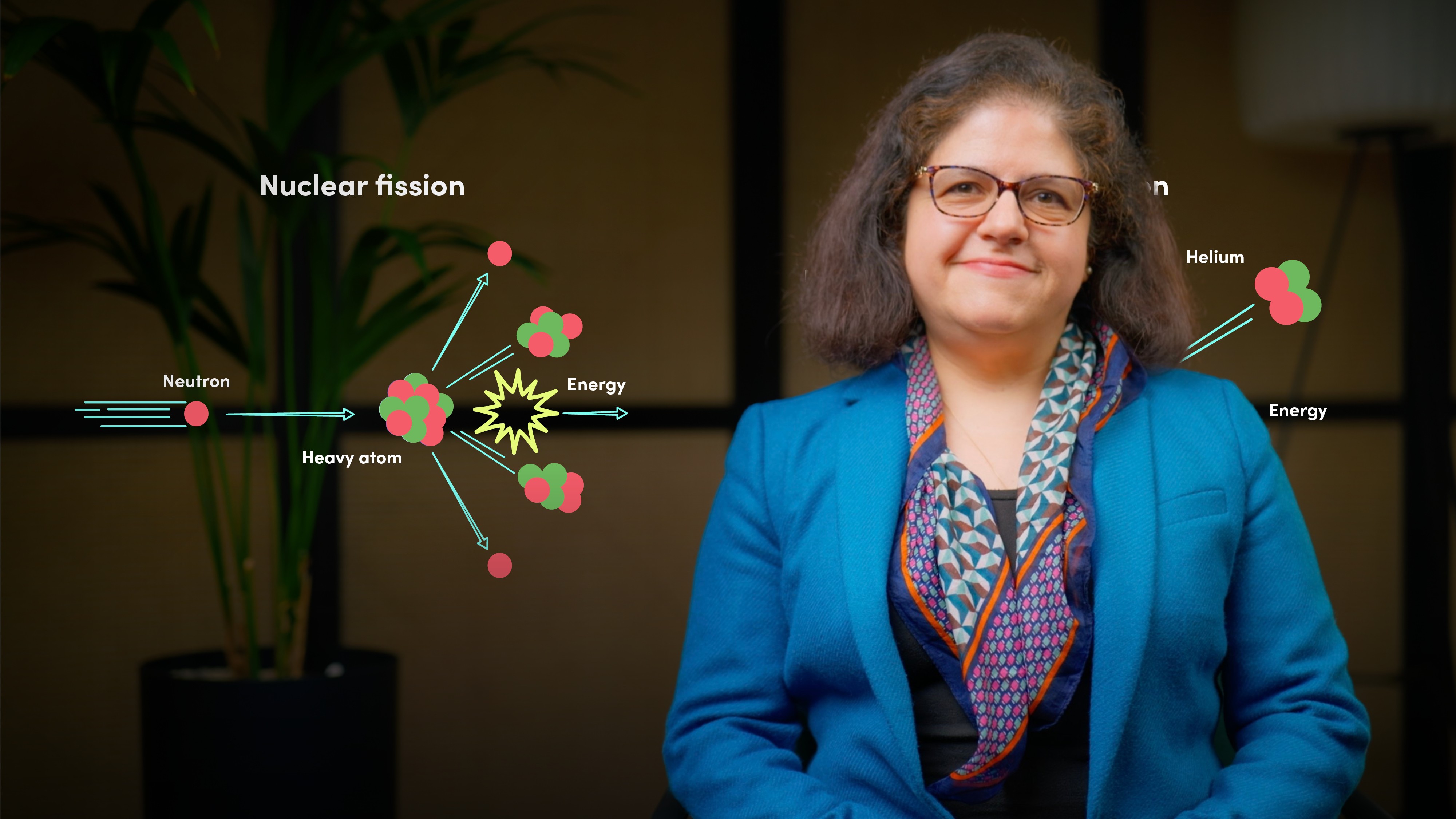
A Closer Look at Nuclear Energy

Olivia Oddi
In this video, Olivia explores nuclear energy’s role in achieving global climate goals, including its contributions to reducing greenhouse gas emissions. She explains the basics of nuclear energy production, its byproducts, and how they are managed. She also highlights the IAEA’s 10 safety principles and lessons learned from past accidents like Chernobyl. Finally, she discusses the importance of regulatory frameworks in ensuring nuclear energy’s safe and sustainable use.
In this video, Olivia explores nuclear energy’s role in achieving global climate goals, including its contributions to reducing greenhouse gas emissions. She explains the basics of nuclear energy production, its byproducts, and how they are managed. She also highlights the IAEA’s 10 safety principles and lessons learned from past accidents like Chernobyl. Finally, she discusses the importance of regulatory frameworks in ensuring nuclear energy’s safe and sustainable use.

A Closer Look at Nuclear Energy
15 mins 57 secs
Key learning objectives:
Understand nuclear energy's role in achieving global climate goals
Outline the basics of nuclear energy production
Outline IAEA's 10 safety principles
Understand the importance of regulatory frameworks in ensuring safe and sustainable nuclear energy
Overview:
Byproducts of nuclear fission include:
- Spent nuclear fuel
- Radioactive waste
What are the key safety considerations for nuclear energy?
Safety in nuclear energy is a top priority, driven by lessons from past accidents such as Chernobyl. The Chernobyl disaster in 1986 highlighted the catastrophic consequences of reactor failures and the importance of strict safety measures. Following the accident, international efforts, such as the construction of the New Safe Confinement over Reactor 4, demonstrated the global commitment to improving nuclear safety.
The International Atomic Energy Agency (IAEA) has established 10 safety principles to guide the industry. These include ensuring that the responsibility for safety lies with operators, optimizing protection to minimize risks, preventing accidents, and protecting current and future generations from radiation exposure. Emergency preparedness and long-term waste management are also emphasized to ensure sustainable and safe nuclear energy use.
Regulatory frameworks are essential for ensuring the safe, secure, and sustainable use of nuclear energy. They provide a legal and institutional structure to enforce safety standards, oversee nuclear operations, and manage radioactive materials. National governments, supported by independent regulatory bodies, play a central role in implementing these frameworks.

Olivia Oddi
There are no available Videos from "Olivia Oddi"

